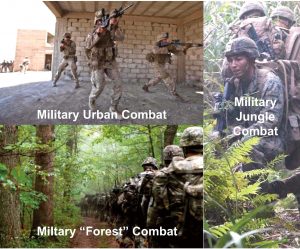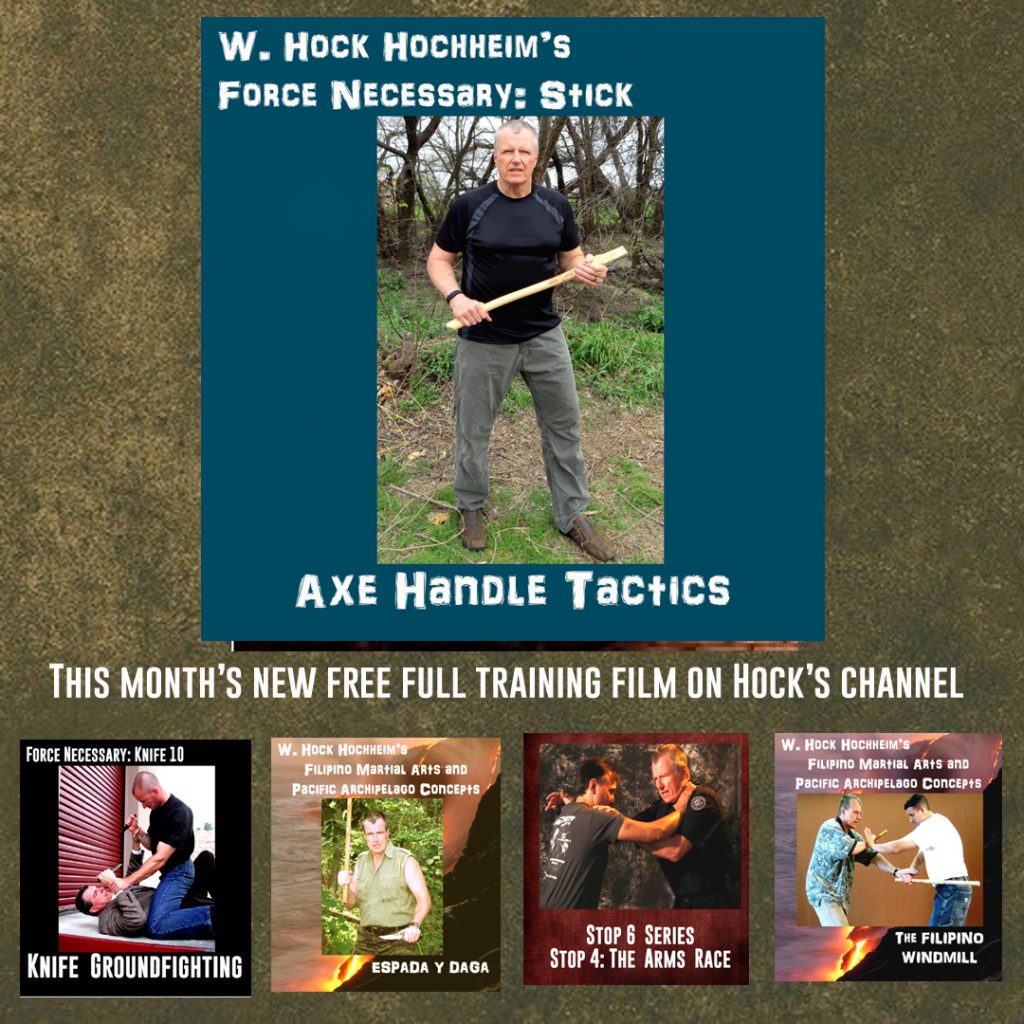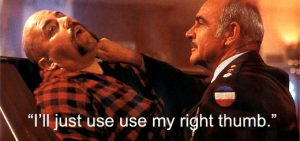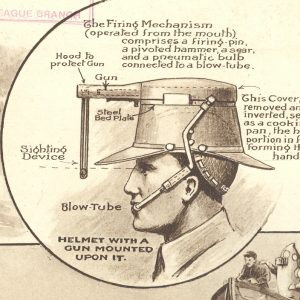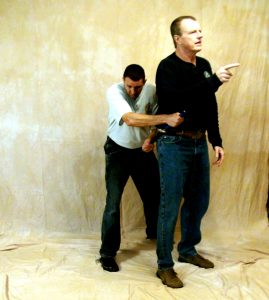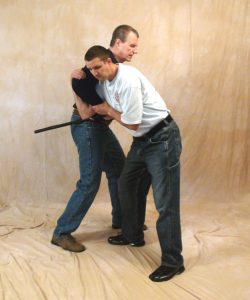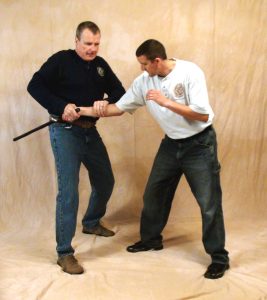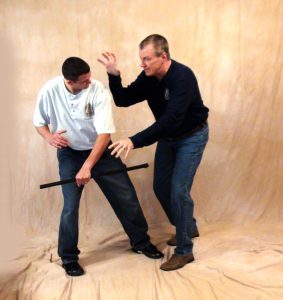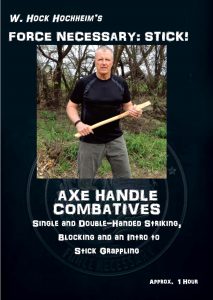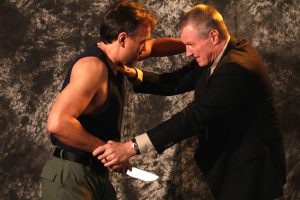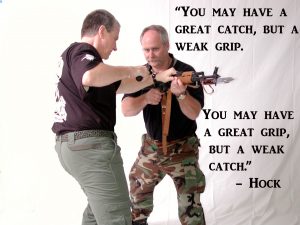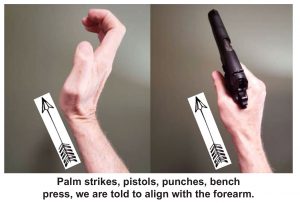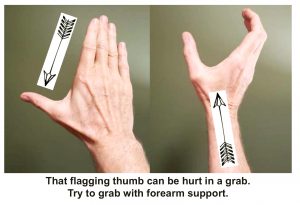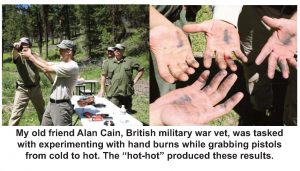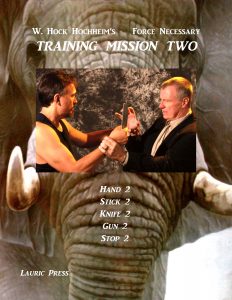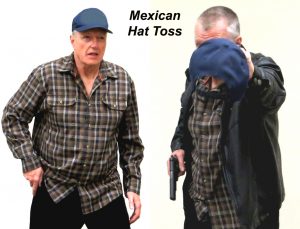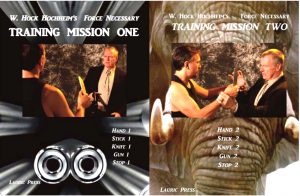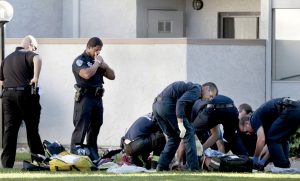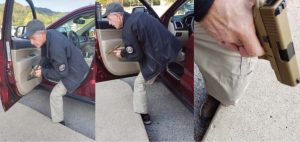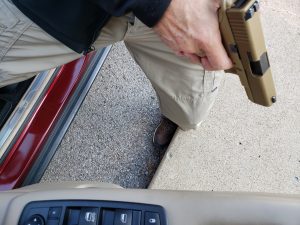I would like to tell 5 quick, pistol/holster retention stories
Retention story #1:
Several years ago I taught at a major US city police academy, an in-service combatives course. Running there also was the rookie class. There was a woman in this rookie class that was consistently having her pistol taken during defensive tactics classes. Instructors told me she’d purchased a high level (many tricks to draw) retention holster. There were so many twists and turns, pushes and pulls, that she herself could not draw her own gun. Their final qualifications were coming up and she absolutely refused to give up her new safer holster, even though she literally could not pull the gun out on demand! I left before there was a conclusion. My best guess though, is she changed holsters.
****
Retention story #2
I was teaching a Chicago seminar once that was attended by a large group of area police officers. One of the scenarios I taught was drawing and shooting after your strong-side/gun-side arm had been incapacitated as in injured or shot. You cross-draw, pull your gun with your support hand, taking care not to accidentally insert your pinky into the trigger guard, a common discharge problem from this angle. You either shoot the pistol upside down (can you do this with your pistol?) or use a knee pinch to get the gun right-side-up. We do this standing and on the ground with simulated ammo as the practitioner actually has to shoot a moving, thinking person closing in and/or shooting back. Next came a short break and I saw all the officers over in one corner of the gym, their support arm stretching and reaching unsuccessfully around their backs to pull their pistol. Only the skinniest, most limber, police woman could do it. I asked them what they were doing, and they told me that their guns and holsters were department issue. The holster retention device would not allow for such a frontal, angle removal. That holster company feared that gun takeaways would usually occur from the front. In order to pull the pistol from that model holster, a shooter had to grab the gun pull/angle it back, and then out. This holster prohibited the easy, common sense draw I, and so many others, teach. (And, what about drawing while seated in a car?)
****
Retention story #3
In the 1990s I was teaching an Air Force SWAT-style team and the San Antonio SWAT team. I was, once again doing simulated ammo scenarios and was doing one on the ground, on my back. I asked for a gun belt and an SAPD officer quickly gave me his. On my back, when time to draw and shoot, I could not remove the pistol from the holster. We all gathered around closely to inspect this. The SWAT officer’s holster had several retention tricks built in. His holster, that company, had also decided that most pistols were removed from the front, requiring a pull backward first, then out. Since I was flat on my back, I could not pull the gun back. No one, all seasoned vets, in the class had thought of this, least of all this SWAT officer until this experiment. One would think that a holster company would put such news on the packaging label and advertisement.
“WARNING! You cannot draw this weapon when down on your back!”
We learned that to draw from such a 3 o’clock, hip holster, you had to roll half-over, or lift your body into a half a crab-walk position.
****
Retention story #4
“Back in the day,” as a detective, I was working with a fellow investigator on a case when we heard of a very nearby armed robbery on the police radio. We were so close, we actually saw the suspect run from the store. We drove as far as we could to chase him, then had to bail from the car and go on foot. A few fences were jumped and the robber got into a cement factory with a large, open gravel lot, and big trucks. We’d split up, but we both saw the robber stop by a truck as we could see his legs under the truck. We split further apart, circled the truck and drew our guns as we closed in. My partner pulled his .45 out on the run. He pulled the pistol AND paddle holster out and pointed it at the bad guy. He made a violent jerk and the holster flew off the pistol. The robber, facing our two guns, surrendered. We laughed about it later because we were a little crazy back then, but we also learned a lesson about holsters.
****
Retention story #5 The Sandpit Travesty. One of my officer friends once, lost his pistol and was shot and killed by a fugitive. Without revealing any personal details, this SWAT officer had a retention duty holster on regular duty, but when on a SWAT assignment had a “drop” holster as shown previously, a low, thigh, tactical holster, minus any retention. His pistol was taken in a ground fight and he was shot in the head. Since sad events like this, retention devices started appearing on the most “tactical” of holsters, (even Taser holsters,)
His agency went on a PR, press junket to prove how much they cared about the subject, suggesting that holster retention was so well trained. They filmed a news segment for TV with their officers training in a sandpit. A trainer grabbed a trainee’s holstered pistol and tried to remove it. The trainee held on and basically the two engages in a stupid, standing wrestling match – four hands on a holstered rubber gun. Sometimes falling down in the ruckess.
Perhaps to an ignorant novice, this seemed like terrific, tough-guy, training? But it is not. No one threw a punch, kicked a nut, yanked head hair, popped an eye, or broke a bone. A bad guy wanting to kill you will do all these things. An officer, wanting to stay alive will do all these things. All the things that can not happen full speed in training, but can be partially simulated, yet still are totally ignored. And like you learn to forget to punch in Judo, bad training makes you forget how to survival fight. This is not preparing an officer, or any one toting a gun, to respond properly to a disarm attack.
And that is why, this sort of sandpit style training is a stupid travesty. And it doesn’t have to be in a sandpit either, as you’ll find stupid anywhere.
Words of wisdom – Military vet and weapons instructor Mike Woods sums up by saying, “Buyer Beware. So, if you’re shopping for a holster – as an individual or as an agency buyer – you need to go beyond the ratings and advertising hype by fully understanding how the various security features work. You also need to ask hard questions about the specific tests and criteria that a manufacturer uses to rate their products. Until the industry unites around a single standard, it’s not enough to assume that Brand X’s Level III rating denotes a comparable level of security, durability and quality as Brand Y’s Level III rating. Your choice of duty gear is too critical — and your safety too important – to be influenced by clever marketing. Ask tough questions, get the details, and make sure you’re comparing apples-to-apples.”
Protecting the belt! There are many such stories. Keep your eyes and ears open for them. And, keep experimenting. Just think about handgun/holster retention. In 26 years in line operations, I have had only 5 attempts on my holstered pistol. There are many attempts on record all over the world. It happens. Statistically your odds on an attempt may be like one in 40,000? But if it happens to you? It’s one in one.
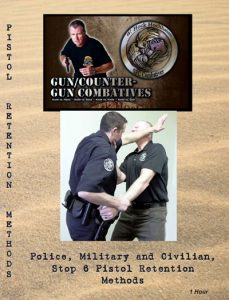

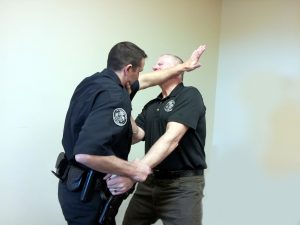
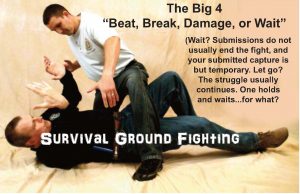
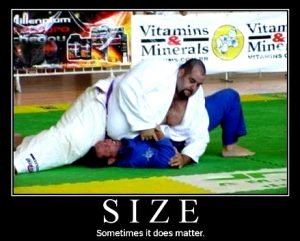
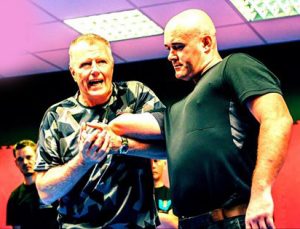
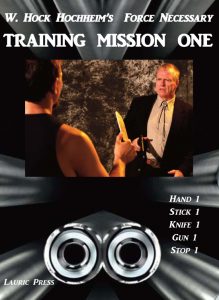


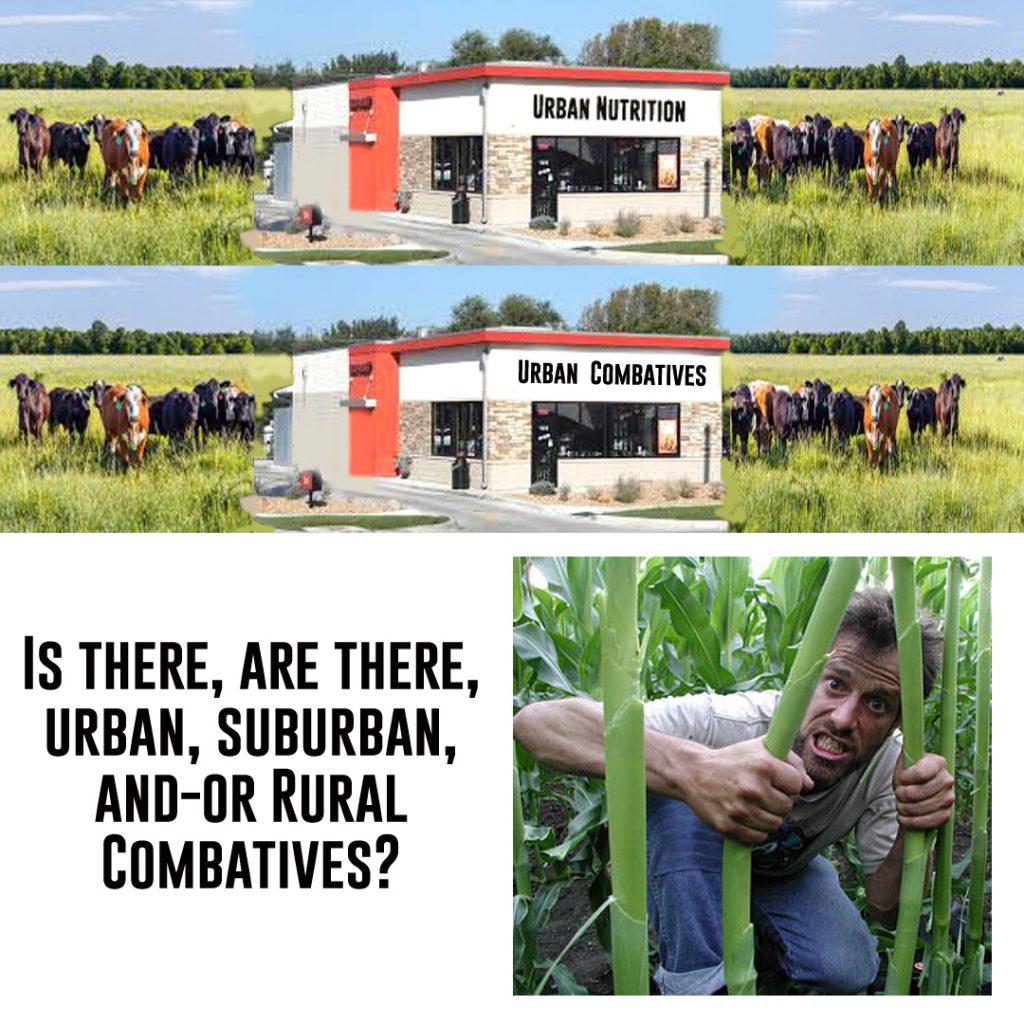

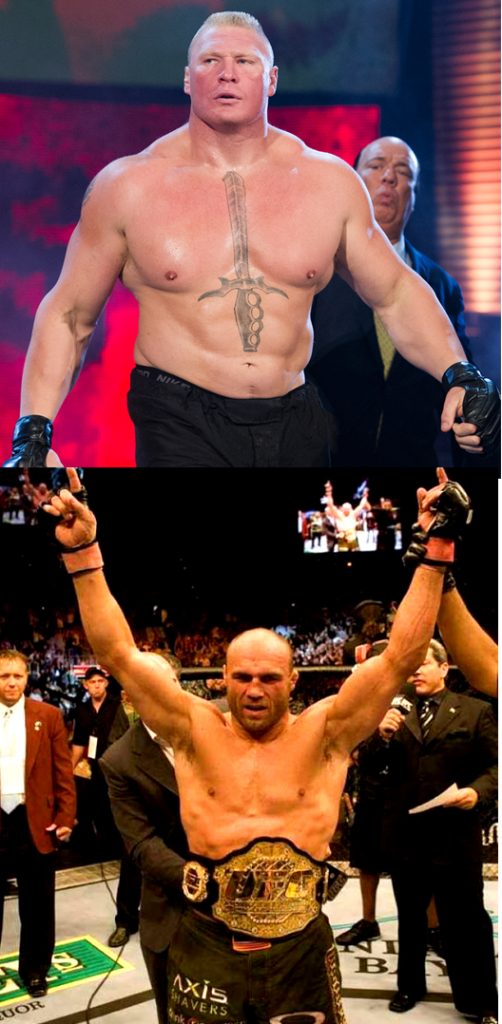 Seems to me urban people have no monopoly in elite fighting. Have you investigated the UFC champs for example? You know Matt Hughes is a farm boy from southern Illinois. Brock Lesnar is from Webster, South Dakota. Randy Couture is from Cornelius, Oregon. There’s a long list of country boy (and girl) champs. I could go on and on with this country champ list. And, champion training is conducted everywhere, not exactly an inner-city or in an urban majority.
Seems to me urban people have no monopoly in elite fighting. Have you investigated the UFC champs for example? You know Matt Hughes is a farm boy from southern Illinois. Brock Lesnar is from Webster, South Dakota. Randy Couture is from Cornelius, Oregon. There’s a long list of country boy (and girl) champs. I could go on and on with this country champ list. And, champion training is conducted everywhere, not exactly an inner-city or in an urban majority. 